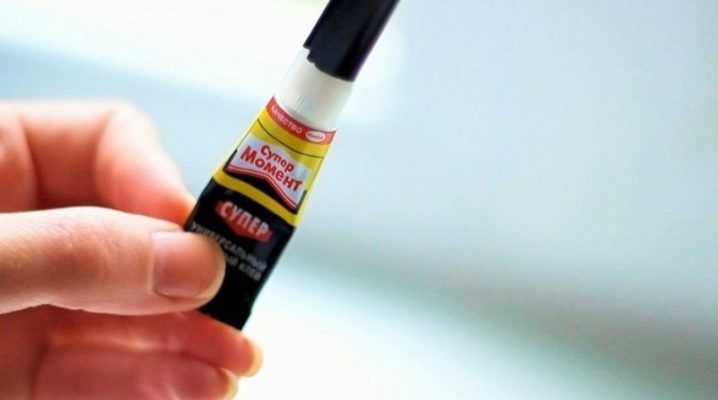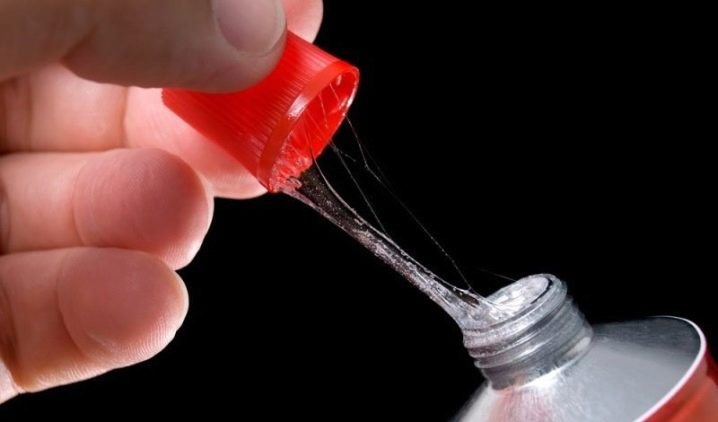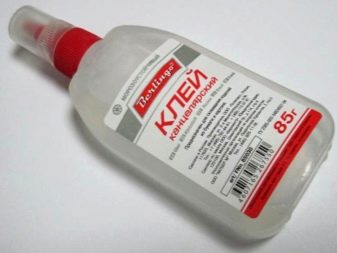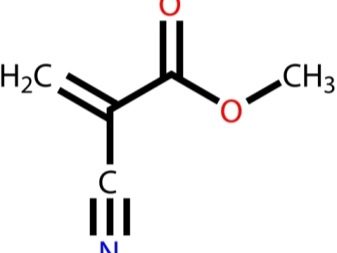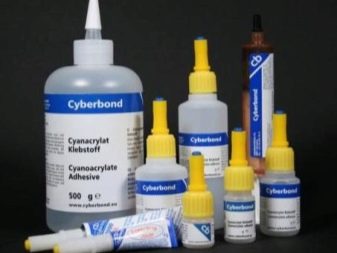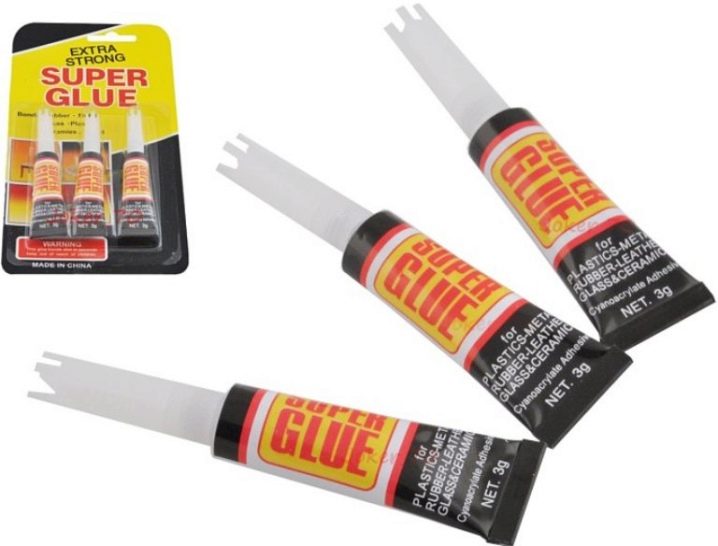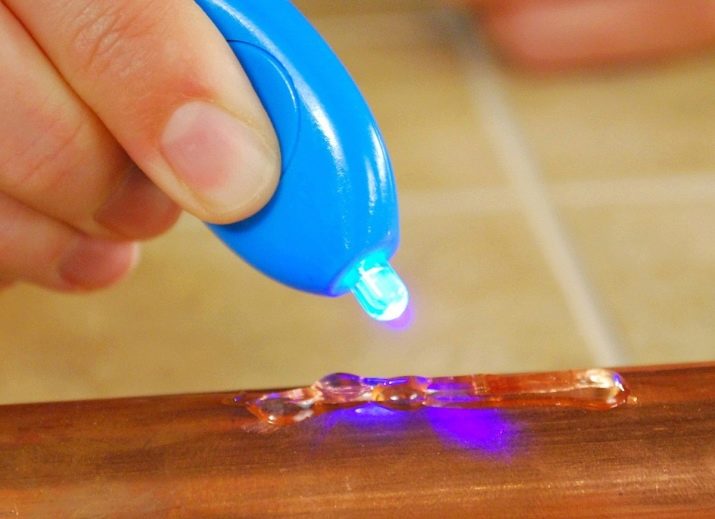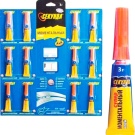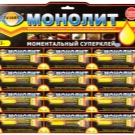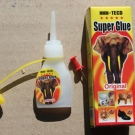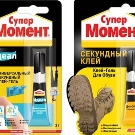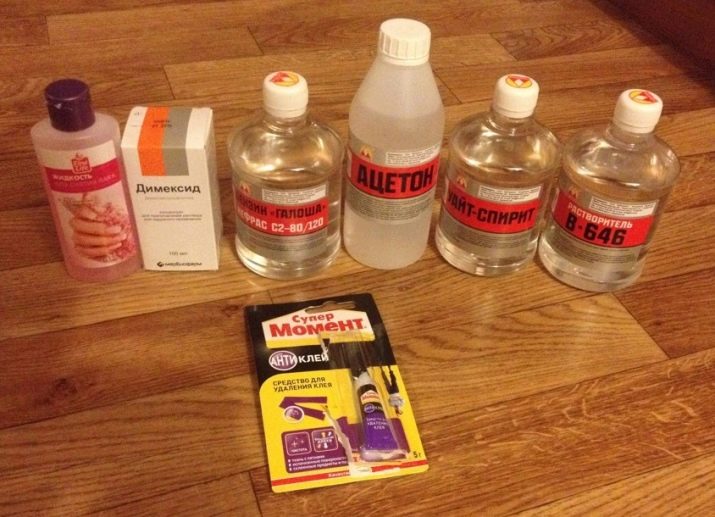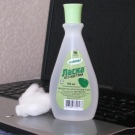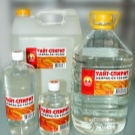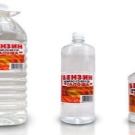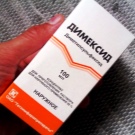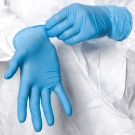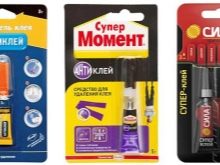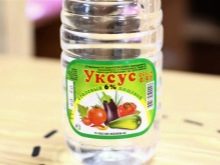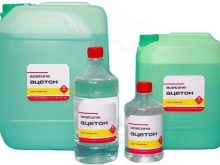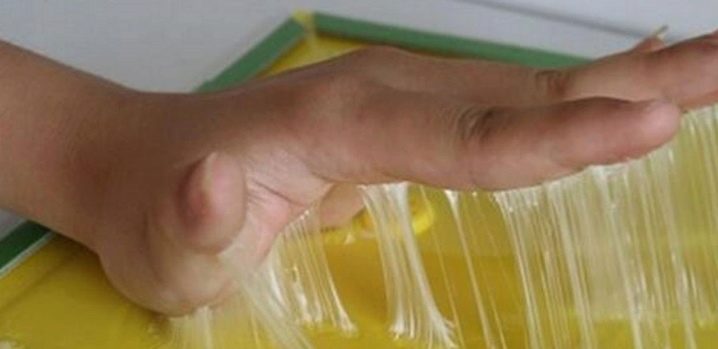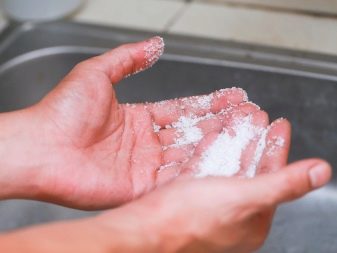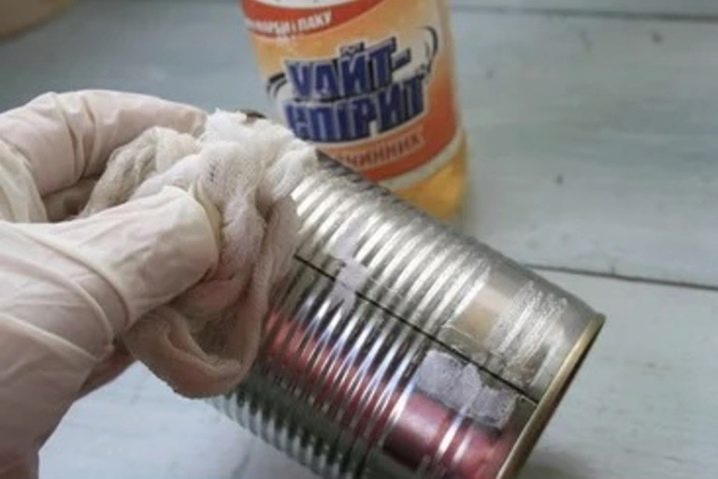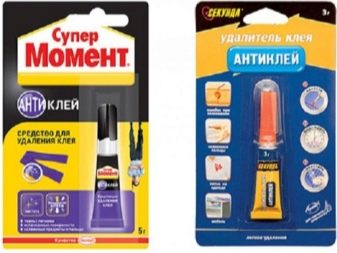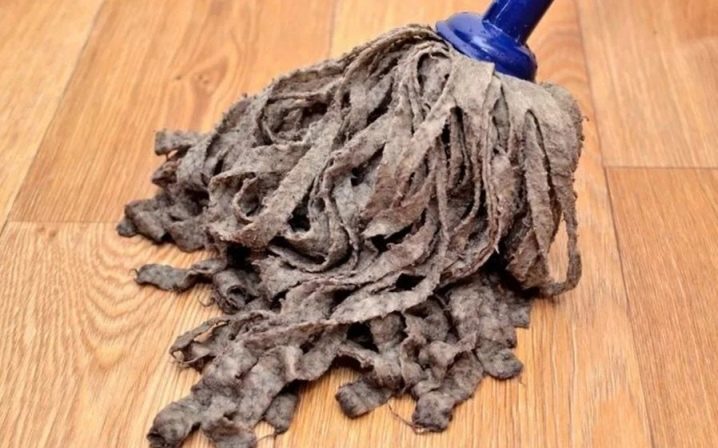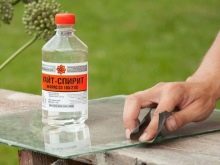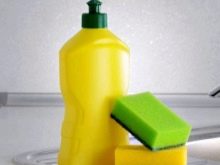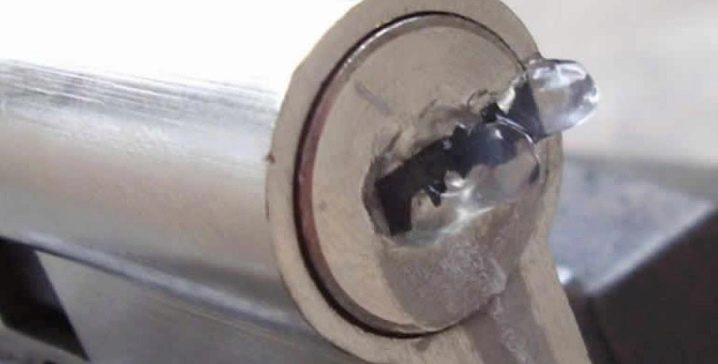How to dissolve super glue?
Often, when performing repair work or repairing various faults, they use super glue. It’s worth getting distracted, and your hands or clothes are already dirty. It is especially unpleasant when surfaces that do not need it are glued together. How can this be prevented and how to get rid of traces of glue on different surfaces?
Features of the composition
When did humanity start using glue? According to archaeologists, it was already used about 9.5 thousand years before our era. Glue cooked from natural materials. In the modern world, artificial additives have been used to create it. Since 1901, a chemist Leo Bakeland worked on the creation of an adhesive, and in 1909 he went on sale.
Silicate glue began to be produced in early 1940. This office glue is used very often. 100 million of its packages are produced annually, their shape is constantly changing. For liquid substances use bottles with caps. Packing in small forms like pencil has become very convenient: it does not dry, it is convenient to use, it has high adhesive characteristics.
Today it is worth more to talk about what a second glue. The name "super glue" implies that it is capable of a lot. A small compact tube can be found in any home; it can be used for minor repairs, for example, to glue a part in a children's toy, to glue a cup or to repair shoes.
The glue contains up to 99% of cyanoacrylates, stabilizers and plasticizers, activators and retarders are also added. Manufacturers use in the composition of different combinations.
Where did the name come from and who invented the super-tool for gluing different surfaces? The substance was first developed by Harry Coover. The first composition was too sticky and was rejected. Already in 1951, American scientists found out that with the help of cyanoacrylate, any surface can be glued together very firmly.In 1958, the super-substance went on sale. Super Glue immediately won great popularity and created a sensation.
This adhesive can withstand a load of 150 kg / sq. cm, more advanced tools - 250 kg / sq. See Super Glue withstands temperatures up to 80 degrees, more modified models - up to 125 degrees. It sets very quickly: from a few seconds to a minute. But for the final setting should wait up to 24 hours.
In the Soviet Union, it was called “Cyacrine”, but it was almost impossible to find it in stores. Currently, the situation has changed: adhesive compositions are present on the shelves in large quantities. They produce super glue under such names as “Secunda”, “Monolith”, “Elephant”, “Super Moment”, “Strength” and so on.
More recently, ultraviolet glue is on sale. With it, you can fix any damage in just 5 seconds. Release it under the brand Lazer Bond. Apply liquid plastic to any surface, and place the bonding process with ultraviolet ray.
What to dissolve?
Sometimes there are situations where super glue leaks and stains the surface. How to be in this situation? Knowing how to dissolve it, you can quickly remove the pollution, without putting things in dry cleaning.
Dissolve super glue with nail polish remover. A cotton swab is moistened in the solution, put on the contaminated place and wait until the adhesive substance is completely dissolved.
You can use white spirit or gasoline. If there is “Dimexide” in the home medicine cabinet, then it also removes glue from the surface. Wear gloves when working with this product to avoid skin irritation.
In case of contact with clothes, it is easy to remove it with “Super Moment Anticles” means or with solvent, which contains nitromethane.
If the stains on the fabric are already old, you can try to dissolve them at home with vinegar. For 1 cup of water take 1 tbsp. spoon of vinegar and rinse the area with glue.
Acetone is also used to remove glue stains., but here the composition of the material should be taken into account: in places where acetone was applied, discoloration spots may appear. This solvent can be used to remove glue from any surface, it is also suitable for liquid nails. If the liquid nails have already managed to grab, the upper part is cut with a knife, the remains are removed with acetone.
How to wash?
Off the skin
When working with super glue, it often gets on the skin of the hands. If the adhesive composition got on the skin - you just can’t get rid of it,soapy water does not remove it. There are three ways to remove the super substance from the skin of the hands.
For this, as a rule, apply:
- acetone: rub the contaminated area well, and then wash your hands with soap and water;
- pumice stone: steam your hands, then gently rub the area with a pumice stone;
- table salt: hands should be wetted and poured into the palm of a large spoonful of salt, which must be rubbed until the pollution lags behind.
These methods can severely damage the skin of the hands - after the manipulations it is necessary to apply lotion or hand cream on the skin.
With metal
From the metal to remove the super-substance is very difficult. You can try to scrub the metal surface using acetone or another solvent that contains volatile substances, but they do not have time to grab with the material.
To completely get rid of contamination, apply a solvent or acetone on a cotton pad or a thick cotton fabric, apply it to the stained area, and put adhesive tape on top. As a result, an impermeable to air environment is created, the glue inside will heat up and its remnants can be easily removed after removing the adhesive tape.
With linoleum
Often, super-glue gets on linoleum.To remove it, you should resort to chemical solvents. To clean the surface, select "Super Moment Anticles", "Antikley" or "Contact". When they are applied to the surface, the glue begins to dissolve and turn into a substance in the form of rubber, which is easily removed.
If you run to the store there is no time and opportunity, use gasoline to remove glue from linoleum. In the case when the stain is already old, you need to wait a few minutes until the glue begins to dissolve. Leftovers are removed with dry wipes. Sometimes from the first time it cannot be deleted, then the procedure should be repeated.
When working with gasoline, you should comply with safety measures, as the substance is flammable. While working in the room should not be children. After working with gasoline, wash the surface with water.
When buying linoleum, you should read the instructions and find out which means are suitable for its surface. If there is a small piece of linoleum, it is possible to conduct a test check on it: spread it with glue, and then try to remove it with various means. To clean the linoleum, you can take gasoline or ammonia. Do not use acetone for cleaning: it can damage the surface.
With plastic
Very often the question arises, how to remove traces of glue from plastic surfaces. Working with this tool, you should be very careful and try to immediately remove the drops of glue from the plastic with a regular cloth. After removing the stain, rinse the surface with dish detergent.
Plastic does not tolerate temperature fluctuations, and can also be damaged when using some chemical solvents, therefore, acetone or gasoline is not used for plastic surfaces.
If the glue on the plastic surface is already dry, you can try very carefully to cut it.
Also, to remove the adhesive composition from plastic, you can use the tool "Dimethyl sulfoxide". You can buy it at any pharmacy.
With glass
As with any other surface, it is always easier to remove fresh contamination from glass: it is enough to wipe it with a cloth.
For dried on the basis of glue used:
- cleaner: it is applied to the glass, a few minutes later removed with a knife;
- white spirit: it is applied with a wet disc on the glass, after 15 minutes, the softened glue is removed with a stationery knife;
- vegetable oil: it is applied for 1 hour, then removed with a plastic spatula or spatula;
- liquid soap, dish detergent: a little composition is added to the water, the soap solution is applied to the glass and washed off with a dish brush.
You can remove the glue from the glass also with ammonia and detergent for dishes: they are taken in equal proportions and put the mixture on the stain for 1 hour. After that, the pollution is removed and the glass is rubbed with a solution of ammonia in the ratio: 1 tbsp. liters of alcohol to 0.5 liters. water.
Useful recommendations
- It is important to comply with safety during operation. If glue gets into the eye, you should immediately consult a doctor. You need to take a tube with you: this way the doctor will understand how to treat the eye.
- The tube is not aimed at itself so that the substance does not accidentally fall on the skin and face.
- The composition has toxic substances, so the work is carried out in well-ventilated areas.
- If not all glue is used, the tube should not be turned off: there is a chance that it will crack at the bend and the substance will spill out.
- You should always keep a tube of glue to read its composition. Thus, it will be clear, the better to remove it from what surfaces.
- If super glue gets into places where it is difficult to reach, for example, a lock, then acetic acid will help.Using a syringe, you need to pour it inside the lock, wait a bit and clean it with a needle or toothpick. Anti-glue or another solvent can also help with such contaminations.
How to remove the super-glue with the help of pharmacy tools, clearly demonstrated in the video.
